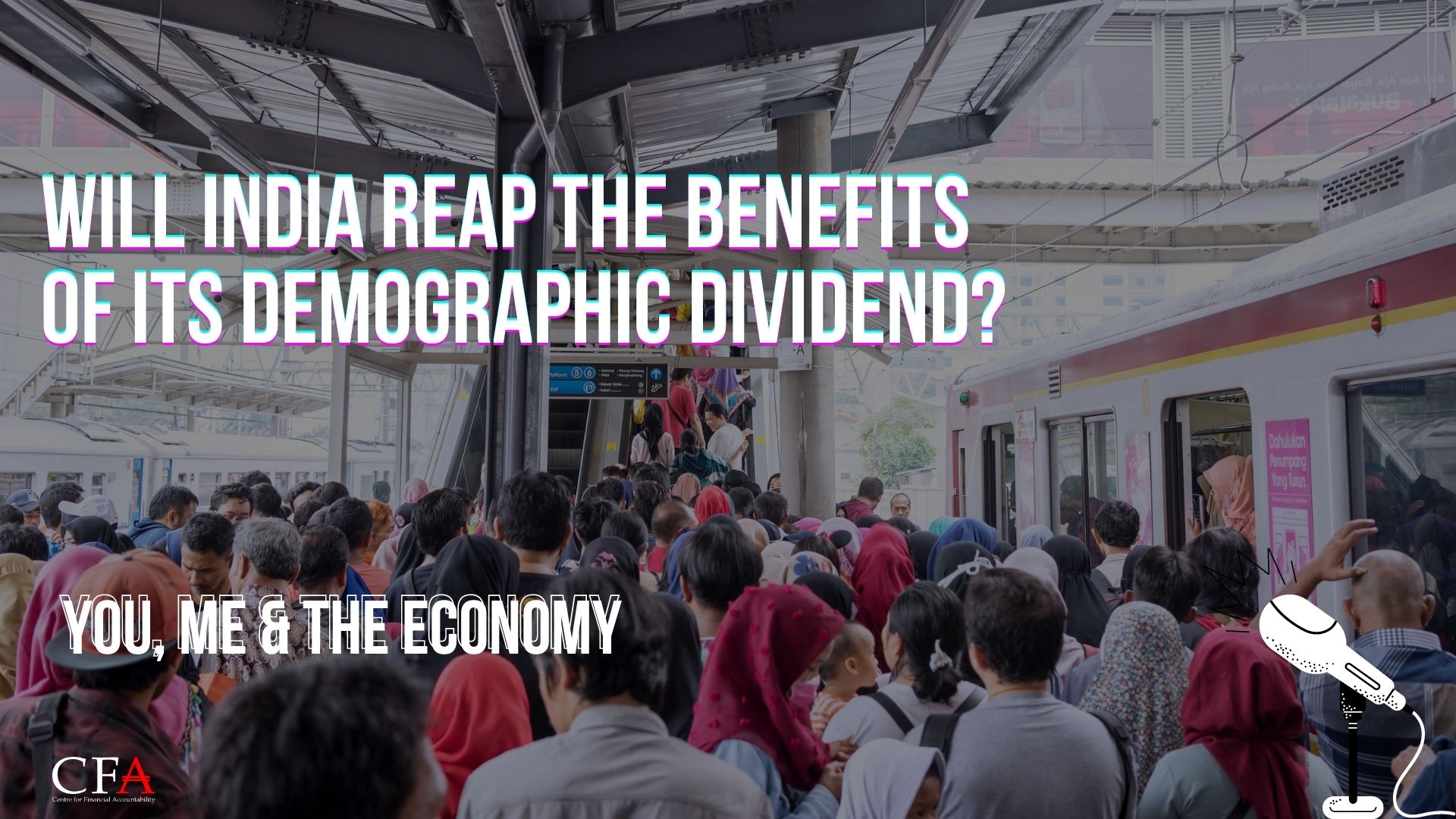Listen to the article here:
As per the UN predictions, we are soon going to be surpassing China and become the most populous country, this month. Right now we are behind by just 3 lakhs.
Likewise, we can also boast of being one of the youngest, with 40% of our population below the age of 25 years. But will this demographic dividend help us to gain an advantage or prove to be a burden? A demographic dividend means the economic growth potential gained because of an increased population of youth in the country. This advantage remains only for a period. A young, healthy, educated and employed population can help the country to grow significantly. Are we prepared for what it means to have the youngest population?
Data from the Centre for Monitoring Indian Economy shows that India’s unemployment rate increased to 7.8 per cent in March. Our labour force participation rate has fallen from 39.9 per cent to 39.8 per cent. That means employment fell from 409.9 million to 407.6 million. Given the conditions of high disguised unemployment in sectors like agriculture and other informal sectors where wages are very low, this is a gross understatement. Similarly, the participation of women in the labour market is a concern. An NSSO survey has shown that over 50% of Indian women in the 15 to 29 age group are neither employed nor studying and aren’t even seeking a job. Can India make use of the demographic dividend without its women?
Creation of jobs is another story!
Despite the claims of a strengthened economy and recovery from the pandemic, people are struggling to find jobs. The much-coveted government jobs are extremely few and declining constantly. Over 22 crore applicants have applied for government jobs since 2014, out of which just 7.22 lakh received permanent positions, as per a report by the Department of Personnel and Training. On the other hand, as of August last year, over 9.79 lakh posts were vacant in government offices! We have seen post-graduates applying for low-skilled jobs in frustration. Real wages have fallen, while the rising inflation has made millions of people struggle for basic necessities every day. The pandemic impacted 82% of small businesses which employ nearly 90 per cent of the labour force, and they are still struggling.
Where will the jobs come from? The common perception is that the IT sector generates lots of jobs. IT sector directly employed 51 lakh employees in the financial year 2021-22, in a country of over a billion people. The service sector, which employs a large number of people, has slowed down in March this year, ending a period of 12 years of growth. But most jobs created in this sector, remain low-paying low productivity jobs, especially in the informal sector, such as domestic workers and security guards.
China was able to reap the benefits of its demographic dividend on the back of rapid industrialisation, with manufacturing and exports leading the way. Its population was also more skilled and educated. Without ample opportunities for quality education and healthcare, could India really count on ‘Make In India?’ The globalized world of today is a different beast than in the 80s and early 90s. Even with the advances in technology and AI, the number of jobs is reducing. And the jobs that fall in the lap of the so-called Third World countries are often the ones banking on its cheap labour force.
Manufacturing output is growing slower than expected, despite the push by the government. Gross value added by manufacturing last year was just 1.6. Manufacturing makes up just 14% of the economy, remaining consistent through decades. One of the goals of Make in India was to push the share of Manufacturing in GDP to 25%, but instead, the goal itself has been pushed 3 times from 2020 to 2022, to 2025. India has been able to attract Apple to assemble iPhones in India, but has turned a blind eye towards its own small manufacturers. MSMEs are engaged in the manufacture of over 6000 products of a wide range. It accounts for nearly 30% of India’s gross domestic product and 45% of its exports. This is the sector with immense potential for job growth if nurtured well, especially in terms of supporting the micro industry, which makes up over 90% of MSMEs.
Instead, the government has placed its bets on large corporates giving them all the possible tax benefits, expecting them to create jobs in turn. The growing unemployment rate shows that this strategy has not paid off. We are instead on the path of a ‘K-shaped’ recovery; immense growth for big companies at the cost of small firms and jobs. If India is to truly reap the benefits of its demographic dividend, it must turn towards its youth, and give them real jobs, not a few bucks to fill chairs in political rallies.
Thank you for listening to You, Me and the Economy. Now you can listen to this podcast on your favourite podcast app; find us on Spotify, Amazon Music, Google Podcast, and Hubhopper!
Centre for Financial Accountability is now on Telegram. Click here to join our Telegram channel and stay tuned to the latest updates and insights on the economy and finance.

